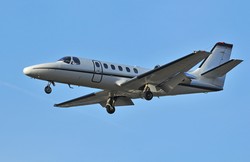‘Gliding flights’ just in time
The CONCORDE (Flight operations for novel continuous descent - CONCORDE) project was launched in 2014 to test the so-called Time and Energy Managed Operations (TEMO) system. The validation of TEMO was co-financed under the Clean Sky Joint Technology Initiative. CDOs have several benefits: they allow aircraft to operate producing less noise and consuming less fuel, which in turn results in less carbon dioxide emissions. For safety reasons, however, the drawback is that a longer distance needs to be maintained between aircraft performing CDOs, limiting an airport’s flight handling capacity. TEMO calculates the optimum approach path based on the capabilities of aircraft, the Required Time of Arrival/Interval (RTA/RTI) at a determined waypoint, as well as weather forecasts. The resulting descent plan is executed using the aircraft’s autopilot, while the use of throttle or speedbrakes is minimised. The TEMO performance was evaluated through simulation experiments, using different system configurations based on the guidance strategy and the control methods. Researchers’ aim was to demonstrate that the new technology has reached Technology Readiness Level (TRL) 5, in which technology is validated in a relevant (simulated) environment. They also investigated the possibility of integrating the system into the existing cockpit architecture of modern aircraft, with unmodified or only slightly modified avionic systems. Additionally, TEMO test flights were performed using a Cessna Citation II research aircraft at Eelde airport, in the Netherlands. The results of several descents showed deviations of less than ten seconds from the required time of arrival. CONCORDE experiments show that TEMO offers clear benefits to the environment while enabling aircraft to adhere to time constraints. Future work could investigate TEMO’s limitations and operational issues identified during flight trials; however, in general terms TEMO concept has been successfully tested in a real-world environment with positive results and feedback of the participants. This is a promising prospect indicating that the capacity challenge can be addressed while greening aviation.







